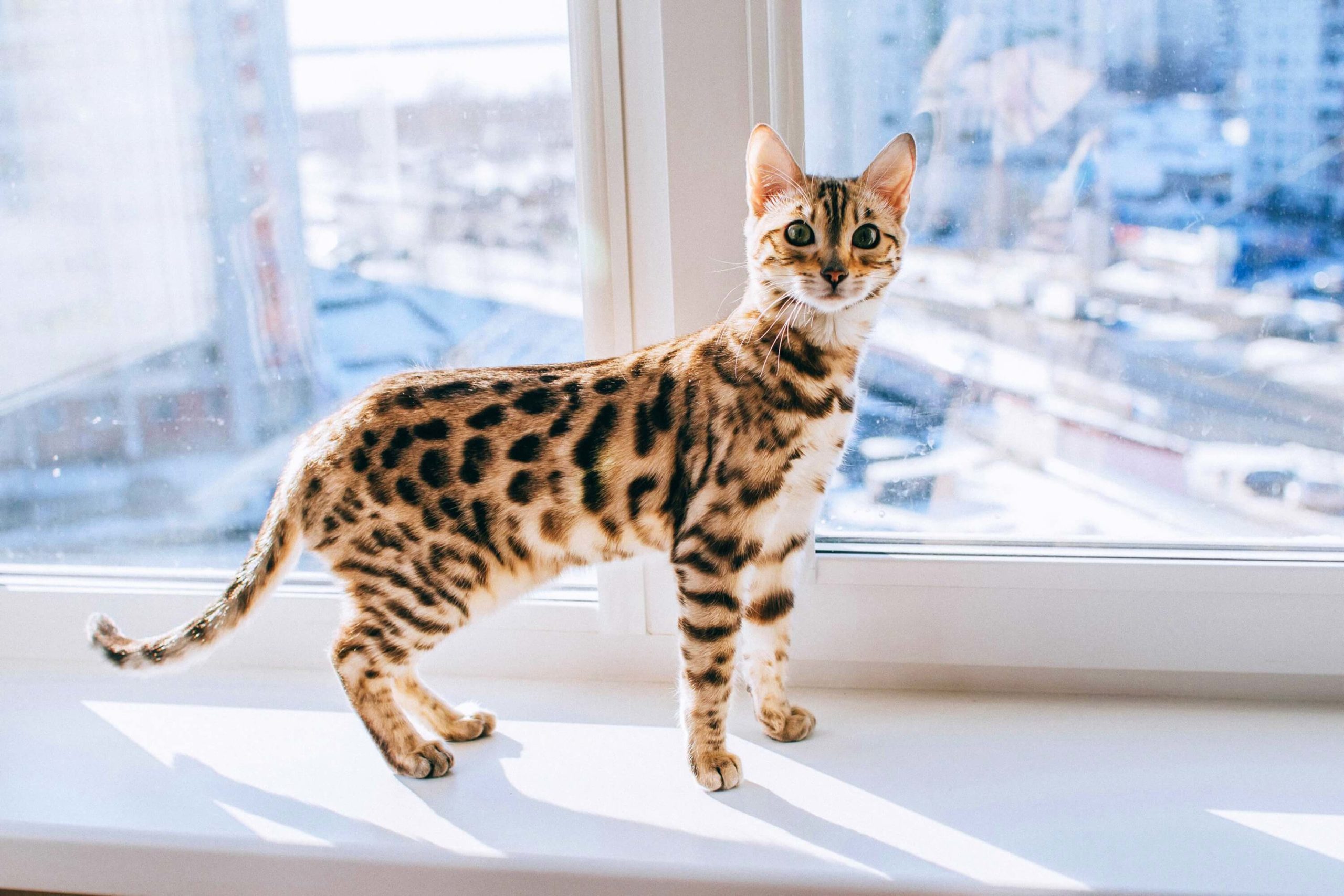Keeping your bengal cat healthy is one of the top responsibilities of being a bengal cat owner.
There are many ways to tell if your bengal cat is healthy, one being it’s weight.
For most bengal cats, the healthiest weight for them is within the range of 10-15 pounds (4.5-7kg).
How Can You Tell If a Bengal Cat Is Underweight?
If your bengal cat is male, it should be at least 10 pounds (4.5kg). If your bengal cat is a female, it should be at least 8 pounds (3.6kg).
If your bengal is below these weights and is fully grown, it is probably underweight.
This could be for several reason including stress, hormonal issues, not being given the right food, and not being given enough to eat.
If you are able to see the ribs of your bengal cat, it is underweight and should be heavier.
How To Help a Bengal Cat Gain Weight
You can help your bengal gain weight by giving it access to nutritious, good food throughout the day, instead of feeding it with meals.
Cats prefer to eat in small portions intermittently rather than in large meals, so giving your bengal access to food more often will help it to eat more.
Another way to help your bengal gain weight is to change the food you feed it.
Bengal cats naturally only eat meat so try switching to a more natural diet and see if your bengal begins eating more.
Since bengals get most of their water intake from food, feeding it wet cat food is better than dry cat food and can increase their water weight, helping them be more healthy.
How Can You Tell If a Bengal Cat Is Overweight?
Male bengal cats are overweight if their weight exceeds 15 pounds (6.8kg). The overall size of the bengal should also be taken into account however and if it is longer than 18 inches then it will most likely be heavier than 15 pounds.
It is typically better to go off of the appearance of your bengal cat rather than the weight itself since cat’s weights can fluctuate and certain numbers don’t necessarily mean your bengal is not healthy.
If your bengal cat does not have a visible abdominal tuck then it may be slightly overweight.
An abdominal tuck is the upwards slope of a cat’s stomach that can be seen when they’re standing. Their belly should hang the lowest towards their front legs and be higher up around their hind legs.
If your bengal does not have a visible abdominal tuck, that is a sign they may be storing excess fat.
Another way to tell if your bengal cat is overweight is if you can feel their ribs when touching their sides.
If your bengal’s ribs are completely covered in fat and you can not feel them at all, your bengal is most likely overweight and could benefit from losing the extra pounds.
How To Help a Bengal Cat Lose Weight
To help your bengal cat lose weight, you can increase it’s activity level, feed it an only raw meat diet, and reduce the amount of food it eats per day.
All of these changes will help your bengal be healthier and lose weight.
Most bengal cats will not become overweight if they are fed a diet of raw meat, so that should be the first priority when trying to help your bengal lose weight.
Bengal cats that stay active are also rarely overweight so playing with it, taking it for walks, and giving it toys to interact with can all make a large difference in your bengal’s health.
If your bengal is an indoor pet then getting it outside and exploring is a good goal to have.
All of these methods should be successful and if not, there may be other health issues with your bengal causing it to gain weight irregularly, in which case you should take it to a vet and take additional action to manage it’s weight immediately.
